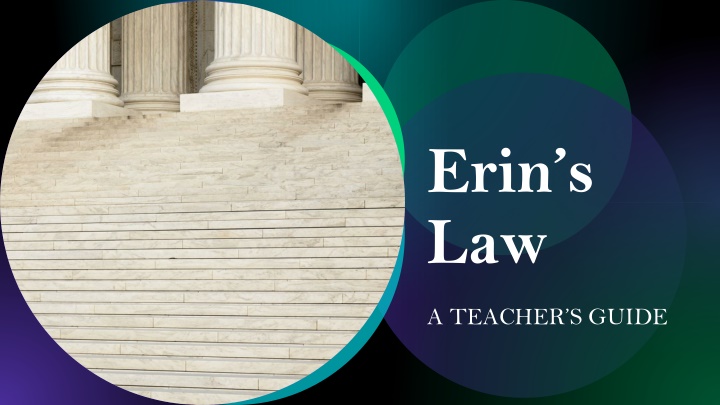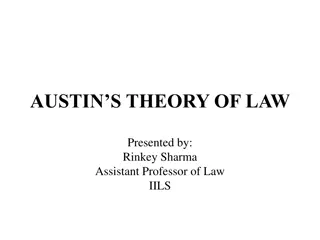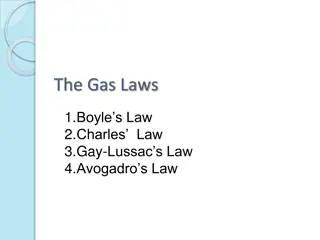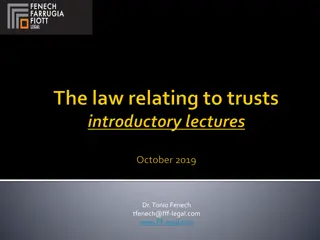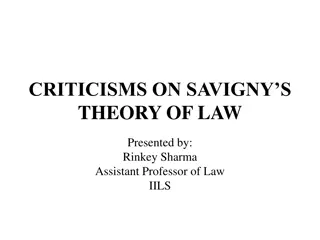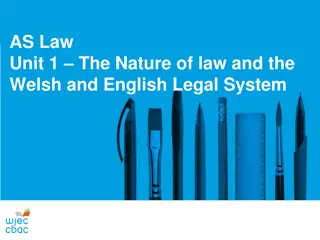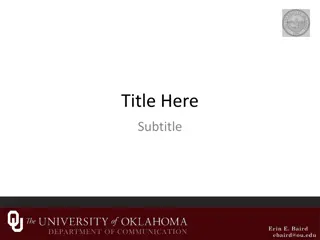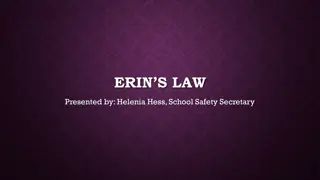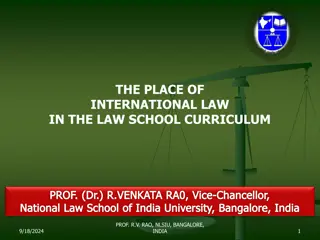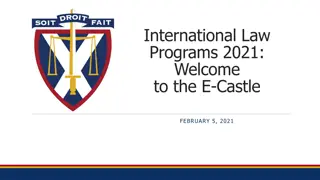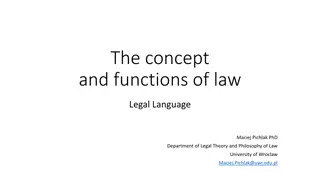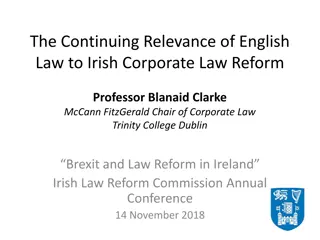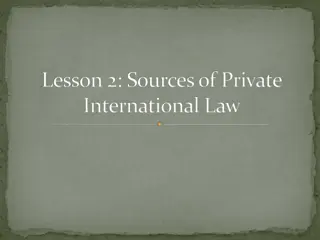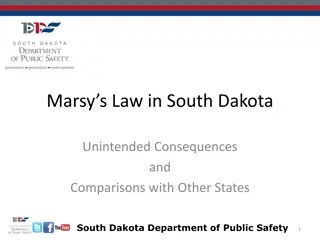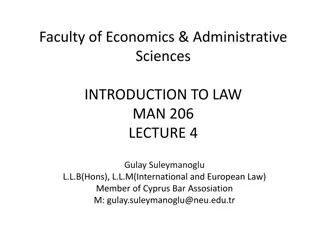Empowering Education: Understanding Erin's Law and Its Impact
Erin's Law, named after Erin Merryn, aims to prevent child sexual abuse by requiring public schools to implement prevention programs. This guide explores the requirements, statistics on child sexual abuse, Erin's powerful message, collaboration with parents, and what students will be taught, emphasizing the importance of educating and protecting children from abuse.
Download Presentation

Please find below an Image/Link to download the presentation.
The content on the website is provided AS IS for your information and personal use only. It may not be sold, licensed, or shared on other websites without obtaining consent from the author.If you encounter any issues during the download, it is possible that the publisher has removed the file from their server.
You are allowed to download the files provided on this website for personal or commercial use, subject to the condition that they are used lawfully. All files are the property of their respective owners.
The content on the website is provided AS IS for your information and personal use only. It may not be sold, licensed, or shared on other websites without obtaining consent from the author.
E N D
Presentation Transcript
Erins Law A TEACHER S GUIDE
What is Erins Law? Named after childhood sexual assault survivor, author, speaker and activist Erin Merryn. (Founder and President of Erin s Law) After Erin introduced the legislation in her home state of Illinois, the bill was named Erin s Law after her. As of July 2019, Erin s Law has been passed in 37 states including New York.
Requirements: Erin s Law requires that all public schools in each state implement a prevention-oriented child sexual abuse program which teaches: 1. School personnel about child sexual abuse 2. child sexual abuse and tell a trusted adult Students in grades K 8th, age-appropriate techniques to recognize 3. Parents & guardians, the warning signs of child sexual abuse, plus needed assistance, referral or resource information to support sexually abused children and their families
1 in 4 girls and 1 in 6 boys are sexually abused by the age of 18. If you don t think you know a student that this has happened to, think again. These children are sitting in our classrooms.
Erins Powerful Message: Erin Merryn, Founder of Erin s Law Erin Merryn Founder of Erin's Law Erin Merryn author, activist, and founder of Erin's Law. Erin's Law is passed in 35 states requiring students be taught personal body safety in school. Illinois was the first state to require personal body safety education taught every year in school. 93% of the time children are sexually abused by someone they know and trust yet parents often only educate children about strangers. Erin is the author of Stolen Innocence, Living for Today, and An Unimaginable Act. Video made by Delack Media Group http://www.delackmediagroup.com
Our Collaboration with Parents Informing parents: A letter will be emailed/mailed to parents informing them of the mandate Parents will be presented with information about : The Erin s law mandate The inability to opt - out Grooming behavior Warning signs Grade appropriate sample lessons Community and internet resources
What Students Will Be Taught: About safe and unsafe touches. (Giving them examples) Safe and unsafe secrets. (Again, providing examples) Make students aware of safe adults they can go to if they are being abused. (ie. teacher, principal, school counselor, parent, or other non-offending relative) How to remain safe online
Warning Signs of an Abused Child: Sexual and Physical Abuse Bruises Change in appetite Inappropriate clothing such as long sleeve shirts in warm weather. Aggressive towards other students Defiant Acting out or disruptive behavior Coming to school too early or not wanting to go home Changes in grades Cheating and lying
When a child discloses what should you do? Do not act shocked Praise the child by telling them they did the right thing by telling Do not pry the child for information. Do not ask leading questions Let the child know they are safe now Make the child as comfortable as possible Reassure child that this is not their fault Explain that the school has to notify the police
Mandated Reporter If you suspect a child is being abused you MUST contact child protective services IMMEDIATELY.
WHAT TO DO IF A STUDENT COMES TO YOU: Tell the student you are there to listen and help them the best you can. Be patient. Avoid judgement or blame. Encourage them to report the incident(s) as soon as possible to the appropriate authority. Also mention that you have an obligation to report it to the administration. If possible, try to keep the student separate from their alleged harasser. Provide them with names of people at the school they can talk to (ie: guidance counselor, nurse, social worker).
Remain calm LISTEN more than you talk Let them know you are proud of them for reporting; they are not alone; believed Reflect back what you hear Ask open-ended questions: tell me more; is there anything else you think I should know? If a child discloses to you DO:
Talk about next steps; Is there anything I can do to make you feel safer? How can I best support you? Encourage them to report the incident(s) as soon as possible to the appropriate authority. Do s Continued: Mention you have an obligation to report it to the administration. Respect confidentiality
Make child retell statement to multiple adults Make promises you can t keep DO Investigate, ask a lot of questions or suggest answers (reasonable suspicion is ALL you need) NOT: Sterilize the disclosure in your report Ask WHY questions such as Why didn t you tell Tell the child how to feel
In Most Cases: A child may overhear disclose limited see information red flags something A child is You displaying or
What to ask.... Can you tell me what happened Then what happened Do you know where this happened Do you remember who (was there) Is there anything else you think I should know to help keep you safe? I am so proud of you for reporting this. ASK OPEN ENDED QUESTIONS
Reasonable Cause to Suspect Based on rational observations, professional training & experience, if you suspect a parent, guardian or other person 18 years or older who is harming or placing a child in danger of harm is reportable. YOU DO NOT NEED PROOF What do you need to make a report? Chapter 193 of the Laws of New York, amending subdivision 1 of section 413 of the social services law.
Mandated Reporters Hotline for Child Abuse & Maltreatment 1-800-635-1522 If imminent danger call 911
Mandated Reporter Situations that require reporting include: A child is showing signs of being abused A child has stated that he or she is being abused A child has stated that another child has been abusing them An adult discloses he or she has abused a child A child has viewed pornography online; refer to slide 16 for assistance on questions An adult is aware of another adult or child who is viewing child pornography A child states that their friend or family member is being abused
Child Protective Services or Law Enforcement Referral Case? CPS is contacted if the suspected abuser of a child is 18 years and OLDER and has regular and consistent contact with that child. ie: parents, babysitters, day care or adults living in the home. CPS Law Enforcement is contacted in ALL other instances What is needed to make a report? Reasonable Cause to Suspect 101 When should a report be made? Immediately KEY Statement I suspect ___ child has been physically or sexually abused because
For more information on this mandate, please utilize the following resources: I.e: Administrators Mental Health Support Staff Erin s Law website https://www.erinslaw.org/
